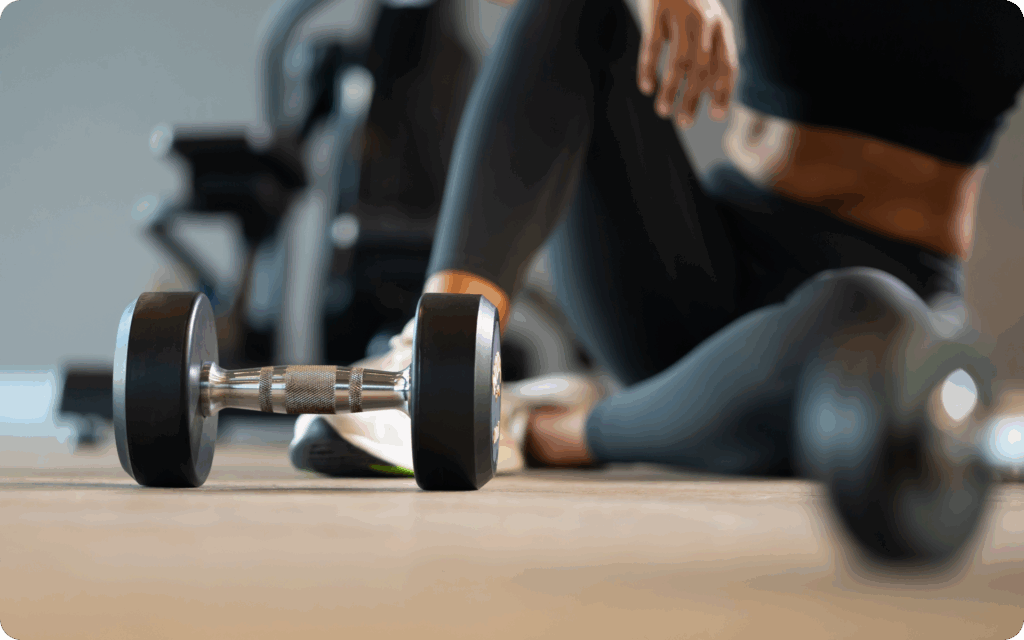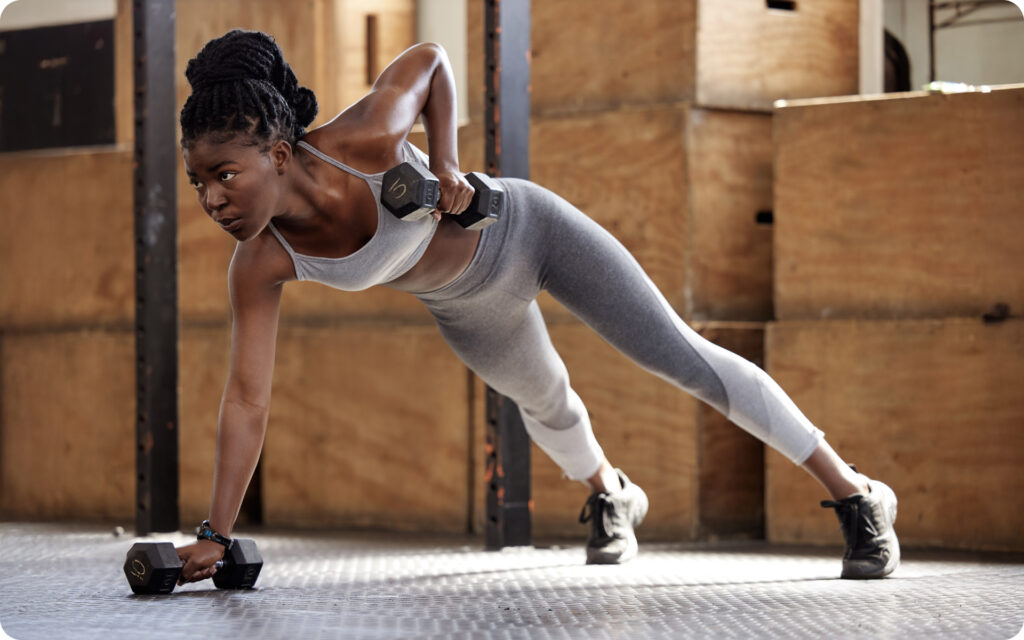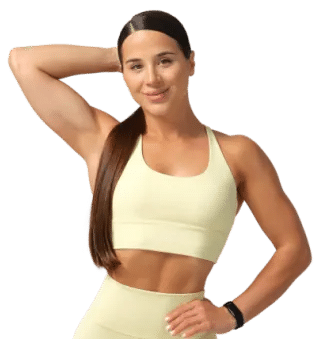Let’s face it, working out can get really confusing. One minute you’re being told to focus on legs, the next it’s arms, then someone throws in something about “core activation”, and you’re left wondering where to even start. It’s no wonder so many people feel stuck before they even start. The good news? There’s a much simpler, less overwhelming way to move your body and actually feel good doing it: a whole-body workout plan.
This kind of routine is pretty much what it sounds like – it targets your entire body in a single workout. No complicated splits, no spending five days a week obsessing over isolated muscles. Just real, effective movement that gets your heart pumping, muscles working, and mind feeling sharper. Whether you’re a total beginner or someone who’s fallen in and out of workouts more times than you’d like to admit (we’ve all been there), this approach can genuinely work for you.
The goal here isn’t perfection, it’s progress. In this article, we’ll break down everything you need to know about building a balanced and realistic whole-body workout plan, from how long it should take, to whether it’s good for building muscle, and even what exercises really do the trick. So, let’s jump in and get you moving with purpose this time.
What Is a Full and Balanced Whole-Body Workout Plan?
When we talk about a whole-body workout plan, we mean a workout session where all (or nearly all) major muscle groups are trained in one go, i.e. upper body, lower body, core, pushes, pulls, legs, everything. In contrast to dedicating one day purely to legs and another purely to arms, this approach hits the body “as a whole” each time.
Why this matters
- It’s efficient. One solid session covers many parts of your body. One study found that full‑body (or “total‑body”) training as opposed to split routines produced similar strength and muscle‑thickness gains in both untrained and trained individuals, when volume and intensity were equal (1).
- It supports balanced development. As you’re regularly stimulating all major muscle groups, you’re less likely to have one area lag far behind another, thereby helping your body feel more integrated and your movement to feel more functional.
- It works realistically. It’s been found that full‑body training is a smart way to be time‑efficient by using bilateral, multi‑joint movements, covering pressing, pulling, hinging, and leg work in fewer workouts (2).
What a “balanced” plan looks like
Here’s what to check for when setting up your whole-body workout plan:
- Use compound movements (such as squats, push‑ups, rows) that engage multiple joints and muscle groups rather than only isolation moves. This will help you hit more of your body in less time (3).
- Cover a variety of movement patterns: e.g. a pushing move (chest/shoulders), a pulling move (back/biceps), a leg move (quadriceps/hamstrings/glutes), a core or stabilisation move.
- Make sure you’re giving your body time to rest, because training the whole body each session is demanding. Recovery is part of progress.
- Tune it to your current level and your goal: whether you’re just beginning, training at home, or going to the gym.
In short, a full and balanced whole-body workout plan is one that, you guessed it… works your body as a whole, uses smart movements, uses your time well, and gives your body what it needs in terms of challenge and recovery. If you’re aiming for a basic full-body workout or full-body strength training routine, this kind of plan is really a smart option.
Read more: HIIT and Strength Training Weekly Schedule: An Expert Guide
Can I Build Muscle with Full‑Body Workouts?
Let’s get to the point. If you’re following a whole-body workout plan, can you really build muscle? The answer is a confident and resounding yes! You don’t need to split your workouts across five different days or isolate every tiny muscle to grow stronger and more toned. Science and real-life results have your back on this one.
What research actually shows
Multiple studies have compared full-body routines to split-style training (where you work different muscle groups on different days), and the results are consistently in favor of one key point: what matters most is how much total work you do, not necessarily how you split it.
- One study published in The Journal of Strength and Conditioning Research compared full-body training to split training in trained men over 10 weeks. The outcome? Both groups saw similar improvements in muscle thickness and strength. The structure didn’t make a difference, but consistency and volume did (4).
- A 2024 meta-analysis in Biology of Sport reviewed 14 studies involving hundreds of participants. It found that when the number of sets and intensity were matched, full-body workouts led to the same muscle gains as split routines (5).
- Even for fat loss (which often goes hand in hand with body recomposition goals), full-body training showed more promise. In a study with trained men, those doing full-body workouts lost more total body fat compared to those doing split routines – again, with matched volume (6)
Why full-body training works for building muscle
Let’s break it down in some real terms:
- You’re training more muscle groups more often. For example, instead of training legs once a week, you might hit them 2-3 times in a full-body plan. That frequency can lead to better growth, especially for beginners or intermediate lifters.
- You’re stimulating larger compound movements such as squats, presses, and deadlifts more often. These exercises engage more muscle and burn more energy, giving you more “bang for your buck”.
- It fits into real life. Most people can commit to 2-4 days per week more easily than 6. A full-body routine lets you get meaningful training done without rearranging your entire week.
BetterMe: Health Coaching app helps you achieve your body goals with ease and efficiency by helping to choose proper meal plans and effective workouts. Start using our app and you will see good results in a short time.
What to keep in mind
- Progressive overload still matters. No matter what kind of routine you do, if you’re not gradually increasing weights, reps, or intensity over time, your results will plateau (7).
- Full-body workouts can be taxing, particularly if they’re too long or too intense. Aim for smart programming and don’t go max effort every session.
- Your recovery game needs to be strong. Muscle grows during rest, not during the workout. Make sure your plan builds in at least one full day of rest between intense sessions.
So yes, you can build muscle with full-body workouts, and if you’re following a whole-body workout plan for beginners or doing a full-body workout program 3 days a week, you’re already in a solid position to make progress.
What Is a Full and Balanced Whole-Body Workout Plan?
Why is this worth considering? For one, doing this kind of workout means you’re more likely to train each major muscle group at least twice across the week. In fact, this study by Schoefeld et al. showed that training a given muscle more than once per week is linked with greater gains in muscle size (7). That means a plan where you’re hitting everything regularly, instead of once and leaving a week to pass, has a real edge.
What does balanced mean here?
- It means you include movements that involve multiple joints and muscles (so‑called “compound” moves) along with some that address smaller, less obvious muscle groups (for example, shoulder stabilisers or hamstrings).
- It means you train pushing, pulling, squatting/hinging (legs/glutes), and core/stabilisation. In this way, your body develops in a coordinated way, not just strong quads but weak hamstrings or a shaky core.
- It means you plan for recovery. Because in a true whole‑body session, you may be stimulating lots of muscles, your nervous system and muscles need time to rebuild. Too much without enough recovery can reduce your gains. One meta‑analysis found that excessive volume per workout actually had a negative interaction with hypertrophy (9).
If you’re curious about full-body men’s workout, check out our earlier article.
In plain speak: if you’re looking for a basic full-body workout or want a whole-body workout plan at home, a full‑body format makes life easier. You don’t have to split your week into 5‑7 different sessions. You hit your entire body in each session or most sessions, and you don’t chase every tiny muscle in isolation unless you want to.
And it works whether you’re designing a whole-body workout plan for beginners, a whole-body workout plan for men, or a full-body workout gym for females variant, the core idea stays the same.
The bottom line: a well‑designed whole-body workout plan means hitting your body broadly, intelligently, regularly, and giving it the rest it needs. If you keep that front and centre, you’re going to build something lasting.
Read more: Strength Building Workout Plan for Long-Term Gains
How Long Should a Full-Body Session Take?
When you’re following a whole-body workout plan, one of the recurring questions is: “How long should each session be?” Let’s talk about what research has told us, and then we’ll get to a practical guideline you can apply.
What the research suggests
- Time‑efficient strength and hypertrophy training is absolutely possible. A time‑efficient program that focuses on multi‑joint, bilateral movements and smart exercise choice can get you great results without spending hours in the gym (2).
- That same narrative review points out the importance of exercise selection (leg press + upper push + upper pull) and using ~6‑15 RM loads with ≥4 sets per muscle group per week, rather than just arbitrarily long sessions (2).
- In a meta‑analysis of whole‑body high‑intensity training (WB‑HIIT) programs, session durations ranged quite widely (some as short as ~18 minutes, others much longer), but the key was that total training time and intensity were associated with improvements in fitness and body composition (10).
- Another important finding: longer isn’t always better. It has been noted that once session duration and fatigue accumulate too much, the quality of each exercise tends to drop and effectiveness suffers. Brad Shoenfeld, author of the textbook Science and Development of Muscle Hypertrophy, pointed out that “beyond a given threshold, the quality of training begins to degrade as session duration increases” (11).
Putting this into plain English
So, what does this mean for your whole-body workout plan? Here are some practical takeaways:
- For most healthy adults doing a balanced full‑body session, you’re looking at somewhere around 45‑60 minutes as a strong benchmark. This gives you time for a warm‑up, 5‑8 total exercises (covering legs, push, pull, core), and appropriate rest between sets without dragging it out.
- If you’re very pressed for time (say you’re doing a whole-body workout plan at home and have only 30 minutes), you can absolutely make it work by focusing tightly on 3‑5 compound movements, shorter rest, perhaps supersetting. Research supports this kind of time‑efficient structure (11).
- If you design a full-body strength training routine for beginners or a whole-body workout plan for men/women, you may keep initial sessions to ~30‑40 minutes and build up as fitness improves and more volume is added.
- Make sure you factor in warm‑up and cool‑down. Even though they don’t count toward heavy lifting time, they matter to injury prevention and help your body perform better.
- Monitor fatigue and quality. If you find that your form is slipping, your enthusiasm is fading, or you’re getting sloppy by the 50‑60 minute mark, it may be a sign that you’re pushing the session too long or too heavy for your current level. A shorter, high‑quality session often beats a longer, sloppy one.
Intense sweat sessions, working weight loss tips, lip-smacking recipes come in one package with the BetterMe: Health Coaching app—all at your fingertips, start transforming your life now!
Why “45‑60 minutes” (or less) can really be enough
- As your whole-body workout plan is hitting all major muscle groups in one session, you don’t need to spend 90 mins doing 15 exercises. Instead, you can pick 6‑8 well‑chosen moves that give the most value.
- For example: squat (legs/glutes), bench or push variation (chest/shoulders), row or pull (back/biceps), hinge or deadlift variation (glutes/hamstrings), core/stabiliser exercise. Each movement addresses many different muscle groups and systems.
- By focusing on quality (intensity, good movement, controlled rest), you get the same result in less time – the narrative review confirmed that – “weekly training volume is more important than training frequency” when it comes to muscle and strength gains (2).
- In terms of recovery, shorter sessions tend to allow you to recover better between workouts – this is particularly relevant if you’re doing a full-body workout program 3 days a week. If each session is too long or too taxing, you may struggle with fatigue and diminished returns (2).
Sample time‑frames based on your status
- Beginner: 30‑40 minutes, 3 days per week. Simple routines, 5‑6 movements, moderate weights, good form.
- Intermediate: 40‑60 minutes, 3‑4 days per week. Slightly more volume, possibly some supersets or more challenging progressions.
- Time‑limited: 20‑30 minutes, 2‑3 days per week. Use compound moves, minimal rest, high focus. Particularly good for a whole-body workout plan at home.
- Gym cases with more time: If you have 60‑70 minutes, you might include a warm‑up, 8‑10 exercises, maybe an extra finisher or mobility work, but recognize that this is more advanced – it isn’t required for results.
A few final cautions
- Don’t extend sessions just for the sake of “doing more” – if it’s dragging, your quality goes down.
- If you consistently feel exhausted after 60 minutes, or your performance drops, dial back the time or volume.
- Adjust based on your goals: if your aim is purely strength with heavy loads, you may need slightly longer rest periods and hence a longer session, and if your goal is general fitness, fat‑loss, or maintenance, shorter sessions are fully valid.
- Listen to your body: recovery, sleep, and nutrition all play a part in how long you should train.
What Is the Best Workout Routine for the Whole Body?
If you’re following a whole-body workout plan, the “best” routine isn’t about cramming everything into one session. It’s about smart structuring, effective movements, and making sure the plan actually fits your life. Whether you’re working out at home or at a gym, the same core principles apply.
How Often Should You Train?
For most people, training 3 days a week (e.g. Monday, Wednesday, Friday) works best. This gives your body enough time to recover, while still stimulating growth. Studies have shown that training each muscle group two or more times per week is linked to better results compared to once weekly, particularly when total volume is matched. That makes full-body routines super efficient (8).
If you’re new to exercise or doing a whole-body workout plan for beginners, start with 2-3 sessions a week. If you’re more advanced, you could do 4, but be careful with recovery.
What Should Each Session Include?
Aim for 5-7 movements that hit all the major areas:
- Legs (e.g. squats or lunges)
- Push (e.g. push-ups or overhead press)
- Pull (e.g. rows or pull-ups)
- Hinge (e.g. deadlifts or glute bridges)
- Core (e.g. planks or anti-rotation work)
You can mix in extras such as carries or isolation moves, depending on your time and goals. For example, if you’re following a full-body strength training routine in the gym, you might add loaded carries or cable work. If you’re at home, stick to bodyweight, dumbbells, or resistance bands.
Sample 3-Day Routine
Each day might include:
- 1 lower-body movement
- 1 upper-body push
- 1 upper-body pull
- 1 hinge or glute/hamstring move
- 1-2 core/stability exercises
Each movement: 3 sets of 6-12 reps. Keep rest periods around 60-90 seconds.
Why This Routine Works
- It hits every major muscle group multiple times a week
- It uses compound exercises for maximum efficiency
- It scales easily based on your fitness level or equipment
- It supports balanced strength and prevents overtraining one area
Whether you’re following a full-body workout gym for females or a whole-body workout plan for men, the structure stays the same, it’s the details that change.
What Are the Disadvantages of Full‑Body Workouts?
Even the best‑designed whole-body workout plan comes with trade‑offs, so it’s worth being honest about them. Here are some of the key drawbacks you should keep in mind:
- Less focus on individual muscle groups
When you train everything in one workout, it’s harder to give a lot of attention to a lagging muscle or isolate a specific weak spot. According to a 2024 meta-analysis of 14 studies, split routines don’t offer superior results overall, but they may allow more targeted volume for specific muscles if that’s a priority (5).
So, while full-body sessions are great for total development, they may not be ideal for someone who wants to heavily specialize or bring up lagging body parts with high-frequency, high-volume isolation work.
- Higher overall fatigue and recovery demand
As you’re training multiple large muscle groups in one session using compound lifts, the body experiences a greater systemic load. A comparison of full-body and split routines in untrained women found no differences in strength or muscle gain, but noted that full-body workouts may create more overall fatigue per session due to the breadth of muscle involvement (12).
This means recovery between sessions becomes more critical. Without enough rest, you risk underperforming in your next workout or even hitting a plateau.
- Session length or volume can creep up
When trying to cover all muscle groups in one go, you may end up with long sessions or too much volume per workout, which can reduce workout quality and increase the risk of over‑training or injury. - Potential for diminishing returns at higher levels
As you become more advanced, and your body adapts to stress more efficiently, you often need to train with more volume and precision. For high-level bodybuilders or athletes with specific needs, full-body formats may need to evolve or become more targeted, rotating in some split training blocks for progress.
How to minimise these disadvantages in your whole-body workout plan
- Alternate exercise selection across sessions so you’re not repeating the same exact movements every workout.
- Stick to 3-4 major compound lifts per session and add just one or two accessories to avoid going overboard on volume.
- Ensure you also include recovery days and monitor how you feel – if soreness or fatigue stays high, lower the volume.
- Use smart exercise selection such as compound moves for a big stimulus, but throw in a couple of targeted moves if you have one or two weak areas.
- Keep your session length and volume in check (e.g. 45‑60 minutes, 5‑8 movements) so you don’t compromise form or performance.
- Periodically evaluate whether your goals require more specialised focus – if they do, you could rotate in a split session or adjust the frequency.
- Use full-body as a base, but don’t be afraid to tweak it with additional isolation work or rotate in short cycles of body part splits if your goals shift.
Full-body is great for efficiency and balance, but splits work better if you want to focus on specific muscles. Yes. For most people, 45-60 minutes is usually more than enough. Just your bodyweight, dumbbells, or bands. Gym gear adds variety but isn’t required. No, your body needs rest. Aim for 2-4 sessions a week with rest in between.Frequently Asked Questions
Is it better to do a full-body workout or a split?
Is 2 hours in the gym too much?
What equipment is needed for a full-body workout?
Is it okay to do a full-body workout every day?
The Bottom Line
If you’re aiming for a fitness strategy that covers “all the bases” in one go, a well‑constructed whole-body workout plan has a lot going for it. It allows you to train your upper body, lower body, and core in each session, which makes it efficient and adaptable whether you’re working out at home or in a gym. By prioritising compound movements, managing time (around 45‑60 minutes), and training 2‑3 sessions per week, you can absolutely make gains in strength, muscle tone, and overall fitness.
That being said, it’s not perfect for everyone: full‑body routines can be harder to recover from, may under‑stimulate very specific muscles, and may require careful volume control, especially for advanced trainees. If your goal is broad and balanced rather than ultra‑specialised, a whole-body workout plan is a strong, sustainable choice.
DISCLAIMER:
This article is intended for general informational purposes only and does not serve to address individual circumstances. It is not a substitute for professional advice or help and should not be relied on for making any kind of decision-making. Any action taken as a direct or indirect result of the information in this article is entirely at your own risk and is your sole responsibility.
BetterMe, its content staff, and its medical advisors accept no responsibility for inaccuracies, errors, misstatements, inconsistencies, or omissions and specifically disclaim any liability, loss or risk, personal, professional or otherwise, which may be incurred as a consequence, directly or indirectly, of the use and/or application of any content.
You should always seek the advice of your physician or other qualified health provider with any questions you may have regarding a medical condition or your specific situation. Never disregard professional medical advice or delay seeking it because of BetterMe content. If you suspect or think you may have a medical emergency, call your doctor.
SOURCES:
- The Effects of Resistance Training Frequency on Muscle Strength and Hypertrophy (2021, pmc.ncbi.nlm.nih.gov)
- Effects of Superset Resistance Training on Strength, Muscle Hypertrophy, and Fatigue (2021, pmc.ncbi.nlm.nih.gov)
- What Are Compound Exercises and Why Are They Good for You? (2024, unsw.edu.au)
- A Comparison Between Total Body and Split Routine Resistance Training Programs (2021, journals.lww.com)
- Resistance Training Improves Cardiometabolic Health and Body Composition in Adults (2024, pubmed.ncbi.nlm.nih.gov)
- Effects of Different Resistance Training Volumes on Strength and Hypertrophy in Trained Individuals (2024, pubmed.ncbi.nlm.nih.gov)
- Physiological and Neuromuscular Adaptations to Push-Up Variations in Strength Training (2022, pmc.ncbi.nlm.nih.gov)
- Overtraining, Exercise, and Hormonal Balance: A Review (2016, pubmed.ncbi.nlm.nih.gov)
- Effects of Resistance Training on Fatigue, Recovery, and Performance (2020, pmc.ncbi.nlm.nih.gov)
- Comparison of Compound and Isolation Exercises on Muscular Strength and Performance (2022, mdpi.com)
- Superset Versus Traditional Resistance Training Prescriptions: A Systematic Review and Meta-analysis Exploring Acute and Chronic Effects on Mechanical, Metabolic, and Perceptual Variables (2025, link.springer.com)
- Effects of Compound Resistance Exercise on Functional Performance and Muscle Adaptations: A Systematic Review (2022, biomedcentral.com)

















